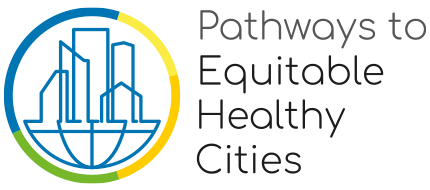Written by: Abhilash Singh, PhD candidate
About us: The Transport and Mobility group studies the influence of urban transportation, land use and services on health in an integrated manner. The emphasis is on how the combinations of location of home, transportation options and provision of services determines mobility and access to services. The group uses engineering, environmental and epidemiological models to predict the expected impacts of transport and land use policies on population health and health inequalities. The work is integrated closely with work on Housing and Neighbourhood. This blog post emphasises the work done by PhD candidate Abhilash C. Singh, Dr. Fangce Guo and Dr. Aruna Sivakumar.
Accessibility measures, which are used to understand social equality and identify and address limitations in people’s ability to participate in society, may not accurately reflect equity in urban settings due to a lack of dimensions that consider inter-individual and inter-household heterogeneity. Accessibility measurement should consider the interaction and compatibility between an urban area’s land use and transportation services in supporting access to opportunities for individuals or social groups, as well as inter-individual, intra-, and inter-social group differences. Accessibility to education opportunities, which is often a top priority for young couples and families with children, can be impacted by proximity to schools and can contribute to social exclusion in minority communities. Current measures of accessibility often focus on easily quantifiable aspects such as travel time and cost, but it is important to also consider factors such as journey quality and the impacts of air pollution and exposure to crime.
One of the tools developed by the transport mobility group is Enhanced Accessibility Score. The objectives of this work are two-fold:
- Utilise modern data gathering techniques to develop a GIS based analysis-tool for a new more inclusive accessibility framework which considers the impacts of new-dimensions such as air pollutants, crime, and destination quality, and
- Quantify the new-dimensions in terms of cost to develop a policy-based accessibility-measure and provide its application in a case-study for the city of London, demonstrating the significance of this study.
As a case study, the enhanced accessibility framework was applied to primary education trips for Greater London. These destinations are facilities which play an integral role in the lives of city residents and whose relative ease of access are of great importance, and London has been chosen due to the availability of high-quality data required to obtain these deeper insights. Aspects of the implementation of the new measure used in this report would require more rigorous calibration of parameters to be suitable for use in real-world planning and policy making, but the findings in this study are sufficient for demonstration purposes.
Accessibility scores for primary education are provided at LSOA level using following criteria:
- Traditional accessibility score, against which we shall compare our new metric
- Reviewed accessibility score considering quality of schools,
- Reviewed accessibility score considering quality of schools and exposure to pollution,
- Reviewed accessibility score considering quality of schools, exposure to pollution and crime.
View the accessibility tool at: https://equitablehealthycities.org/focus-cities/london/transportation-chart/
